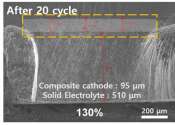Mass can be defined as a quantitive measure of the resistance an object has to change in its velocity. In physics, mass (from Ancient Greek: μᾶζα) commonly refers to any of the following three properties of matter, which have been shown experimentally to be equivalent:
Mass must be distinguished from matter in physics, because matter is a poorly-defined concept, and although all types of agreed-upon matter exhibit mass, it is also the case that many types of energy which are not matter—such as potential energy, kinetic energy, and trapped electromagnetic radiation (photons)—also exhibit mass. Thus, all matter has the property of mass, but not all mass is associated with identifiable matter.
In everyday usage, "mass" is often used interchangeably with weight, and the units of weight are often taken to be kilograms (for instance, a person may state that their weight is 75kg). In scientific use, however, the two terms refer to different, yet related, properties of matter. Weight can be zero if no gravitational force is acting but mass can never be zero.
The inertial mass of an object determines its acceleration in the presence of an applied force. According to Newton's second law of motion, if a body of fixed mass M is subjected to a force F, its acceleration α is given by F/M.
A body's mass also determines the degree to which it generates or is affected by a gravitational field. If a first body of mass MA is placed at a distance r from a second body of mass MB, each body experiences an attractive force F whose magnitude is
where G is the universal constant of gravitation, equal to 6.67×10−11 N m2kg-2. This is sometimes referred to as gravitational mass (when a distinction is necessary, M is used to denote the active gravitational mass and m the passive gravitational mass). Repeated experiments since the 17th century have demonstrated that inertial and gravitational mass are equivalent; this is entailed in the equivalence principle of general relativity.
Special relativity shows that rest mass (or invariant mass) and rest energy are essentially equivalent, via the well-known relationship (E=mc2). This same equation also connects relativistic mass and "relativistic energy" (total system energy). These are concepts that are related to their "rest" counterparts, but they do not have the same value, in systems where there is a net momentum. In order to deduce any of these four quantities from any of the others, in any system which has a net momentum, an equation that takes momentum into account is needed.
Mass (so long as the type and definition of mass is agreed upon) is a conserved quantity over time. From the viewpoint of any single unaccelerated observer, mass can neither be created or destroyed, and special relativity does not change this understanding (though different observers may not agree on how much mass is present, all agree that the amount does not change over time). However, relativity adds the fact that all types of energy have an associated mass, and this mass is added to systems when energy is added, and the associated mass is subtracted from systems when the energy leaves. In such cases, the energy leaving or entering the system carries the added or missing mass with it, since this energy itself has mass. Thus, mass remains conserved when the location of all mass is taken into account.
On the surface of the Earth, the weight W of an object is related to its mass m by
where g is the Earth's gravitational field strength, equal to about 9.81 m s−2. An object's weight depends on its environment, while its mass does not: an object with a mass of 50 kilograms weighs 491 newtons on the surface of the Earth; on the surface of the Moon, the same object still has a mass of 50 kilograms but weighs only 81.5 newtons.









